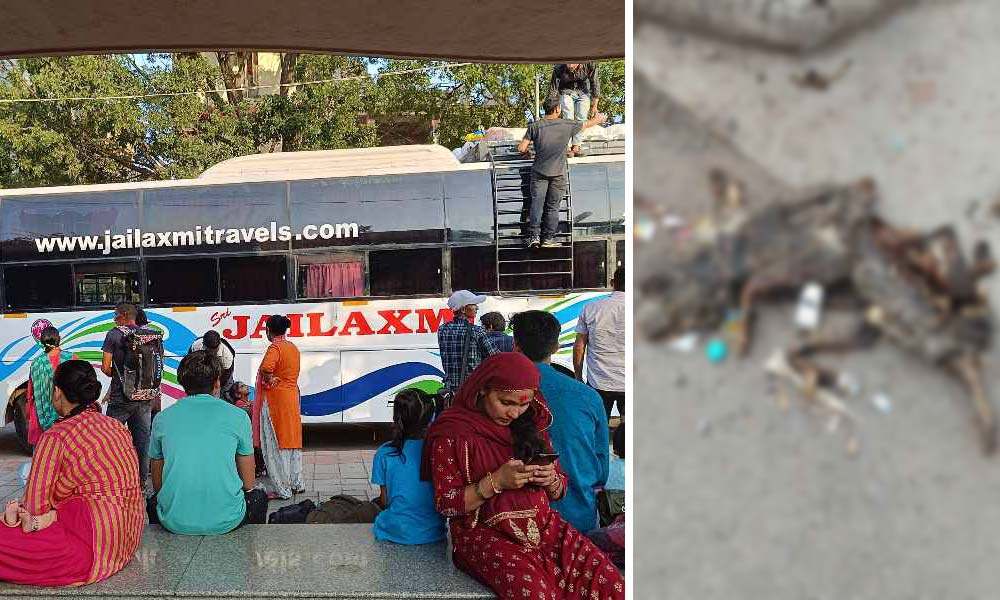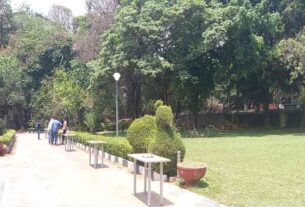Officials from the Solid Waste Management (SWM) Department of the Bruhat Bengaluru Mahanagara Palike (BBMP) placed the onus on the public to report such incidents.
The decaying remains of what appears to be a dog have been lying near the Krishna Rajendra Market Metro Station, for over two months. This has raised concerns among the commuters as the metro station is situated close to the Victoria Hospital, as well as a Government Pre-University (PU) College and High School.
Expressing her discomfort, Usha, a college student who frequently passes by the site said, “The smell emanating from the carcass is unpleasant and the sight is disturbing. The carcass has been lying here for quite some time but I do not know whom to complain to.”
Keshav, a commuter, voicing his concern about the potential health risks posed by the carcass, particularly for children, said, “Children tend to run around while we wait for transport here. They can easily contract diseases as it is not always possible to keep them away from coming in contact with the carcass.”
Gowthamghosh B., an Assistant Professor at the Indian Institute of Health Management Research, Bangalore (IIHMR), pointed out the heightened risk posed by the carcass lying unattended near hospitals and schools. “Individuals within these institutions are more susceptible and immunocompromised,” he said. The thriving of flies and rats in such conditions, which can carry diseases, poses additional health hazards. And the disposal of animal carcasses in the open can lead to environmental contamination as well, he added.
Sanitation workers engaged in clearing such waste should be equipped with appropriate gear, including gloves, boots, and masks, to prevent infections, especially through open wounds, he said. “Vaccinations, regular health check-ups, and adequate training for these workers are necessary,” he added. In addition to proper carcass disposal, public awareness campaigns to educate the community on how to handle such situations and report them effectively should also be taken up by the authorities, he said.

A Junior Health Inspector (JHI) from the Solid Waste Management (SWM) Department of the Bruhat Bengaluru Mahanagara Palike (BBMP) said that such incidents of neglect are rare. “We usually rely on reports from citizens or BBMP sanitation workers (pourakarmikas) about such issues. Once the BBMP control room receives a complaint, the designated contractor for the area proceeds to clear and dispose of the carcass under the supervision of a JHI,” he said.
N.Shivaprasad, the contractor responsible for handling animal waste in the Chamarajpet constituency, under which the K.R. Market area falls, said that four vehicles are deployed to collect animal waste from the seven wards. “While regular animal waste is directed to rendering plants, carcasses are buried in private landfills at Kanakapura Road and Doddaballapur,” he said.
Dr. Lokeshwari M., an Associate Professor in the Department of Civil Engineering (Environmental Engineering) at R.V. College of Engineering, said that the best way to dispose of animal carcasses is by composting them in compost plants. “However, in cases where the deceased animals are found to be infected, incineration, rather than landfill disposal, is advised,” she said. To prevent infestation by flies and birds at landfills, safety measures such as securing the landfill with layers of soil is important, she added.
Stressing the importance of timeliness while dealing with animal carcasses, she said, “Carcasses should be cleared within 24 hours, and the affected area should undergo thorough sanitation.” The responsibility lies with the public as well, who must promptly inform the authorities of such incidents through the designated contact numbers, she added.




